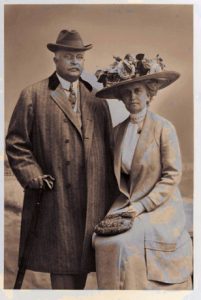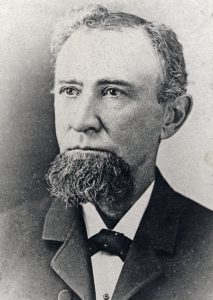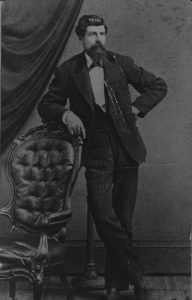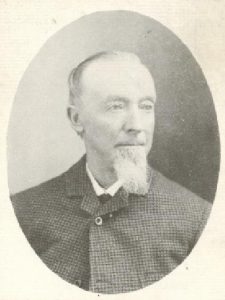PATH OF FLAMES MARKED BY BARE HILLS AND RUIN (Article #1)
There were two articles published on the front page of THE OJAI on Friday, June 22, 1917. THE OJAI is now the Ojai Valley News. The first article is reprinted here with their permission. The author is unknown. The second article will be posted on this site at a later date.
Where the Fighting was Fiercest Along Great Battleline of Flame, with Figures, Facts and Fancies Concerning the Devastating Disaster
In our last issue we were only able to refer briefly to the devastating fire which with almost resistless force swept the adjacent hills for miles, leaving the watershed of a green forest reserve bleak and barren; then lashed into fury by a terrific gale, shot into the valley by leaps and bounds, leaving in its wake a checkered area of ruins, where a short time before stood the homes of our citizens, or the rich fruitage of orchard and field.
And even now, no word picture can be traced upon paper that would adequately and accurately portray scenes and incidents following closely the first realization that the civic center was in the lurid path of danger. It was the noon hour, or thereabouts, when the contingent of Ojai’s heroic fighters headed for the fireline in the Matilija, where the first struggle for mastery over the relentless fire demon was staged by our home guards and citizens generally, although at Wheeler’s a brave band of sixteen were at that moment facing a hell of fire, which commanded a position cutting off possible assistance, having eaten its way through the north fork, over and along the ridges, at a point near the new bridge at the turn leading to Matilija Springs, jumped into the canyon, while another lurid line reached out towards Fred Sheldon’s and the more open valleys beyond, until shooting hither and yon the billows of flame penetrated to and beyond Lyon’s Springs. Even then the hot breath from the seething furnace had not shaken us in our deep-seated sense of security. Men, women and children watched the rising pillar of smoke blacken and broaden without fear or apprehension, little dreaming that a few hours later the somber hues would be reflected in a bright red glare up and down the post office tower from the Ojai Avenue and Signal St. sides, with ominous significance.
It was at about this time that reports passed from lip to lip, highly tinged with exaggeration—Lyon’s Springs, rumor said, was burned and that Mrs. Lyon had perished in the flames; that the Sheldon place was in ashes and sixteen women and children were hemmed in at Wheelers, the latter statement being true. Then followed the terrorizing news that the Farnum place was in ashes and that the Lamb house did not burn and the family was safe, Mrs. Land and a few days old infant, with the nurse, finding refuge in a near field. The infant has since died, and the death of the nurse from shock was reported early in the week in these columns.
Forest Ranger Bald, at one time hemmed in by the fire at Wheelers, made his way to Ojai, reaching here almost exhausted at about 4 o’clock Saturday afternoon, to get in communication with Santa Barbara forest service station. The telephone line at Wheeler’s going out of commission 15 minutes after the first sweep of flames, but more particularly to get a line on the situation here. He found that most of the available men were fighting in the Matilija, at Fred Sneldon’s and in the vicinity of Cozy Dell and Loring Farnum’s. When asked his opinion of the situation here, he said it was very grave, and immediately began to muster a fighting force here and to get some of the 150 or more men back from the hills. It was then that the first real alarm was felt, and only shared in by a few. But as the moments flew by the menace grew, and with the approach of dusk the threatening tide of fire was rolling onward, nearer and nearer. After the Farnum home had been wiped out, the word passed along that the beautiful Sinclair home was doomed, and from the tower an appalling sight fairly blanched the faces of those who watched. A little before 7 o’clock, machine after machine rolled in from Ventura, in response to the call for aid to move out the women and children, and a little later Santa Paula got the startling message: “Ojai is doomed” and the response was immediate. At 7 o’clock, or a little later, a terrific wind added to the fury of the conflagration, which had divided and spread, reaching the southward to Sid Graham’s and beyond, cutting off escape in that direction and thereafter, for hours, cart loaded with terrified refugees sought safety in Santa Paula and Ventura via Sulphur Mountain Springs, until, so far as known, only Mrs. Hudlburg, Mrs. Munger, Mrs. Gallantine and Mrs. Russell remained, all refusing to go, but some time after midnight Claude Gallantine forced his mother out although at that hour most of the carnage had been done.
Before 9 o’clock a perfect whirlwind of fire was roaring through the northern, northwestern and western portion of the village with freakish, uneven strides, refusing to be conquered, the the cry, “we are doomed!” on many tongues, or reflected in the faces of those upon the street, and while it seemed a bedlam with whirring , honking cars, there was but little disorder and no hysteria when the excitement and danger was greatest, although the scene was most appalling to the clearest heads and stoutest hearts.
Fanned by the gale the flames shot upward from base and brow of the hills beyond the Foothills hundreds of feet, and the drop into the valley was swift and sudden. The destruction of property was just as rapid. When the Foothills hotel formed a pyramid of fire, with the Robertson and Sinclair homes in ruins, the work of havoc had begun in the valley. The streets were carpeted with ashes and cinders like glaring torches hurtled through the air, starting fresh fires far from the parent body of flame. Its early entry into the village was heralded by the report that the Hudlburg home was afire, to this was soon added Judge Wilson’s, but neither had to see his home and sit upon the porch (where a chair had caught fire and gone out) before he would believe it.
But there was still an abundance of costly fuel for the flames, which ate their way into the heart of the residence section, leveling the homes of F. H. Osgood, A. Rudolph, R. P. Menefee, S. L. Smith, D. D. Schurman, G. W. Mallory, Mrs. F. Weir, Mrs. B. S. Stewart, John King, John Timms, Jim Fraser, Geo. Foreman, Morris Cota, P. A. Crampton, C. A. Stewart, O. H. Busch, Mrs. W. L. and Clarence McKee, Mrs. T. G. Gabbert, Mrs. Wermuth, Frank Wolfe, Frank Kelley, C. C. VanFleet, P. K. Miller, Mrs. Ella Miller, G. B. Turner, Ed. Haas, Boyd Gabbert, Chas. Gibson, A. W. Helm, and further north and east those home of Jack Edwards, Dave Warner and Mrs. Rich. In the work of destruction on the hill and the flat below, Dr. Van Patten, Fannie Johnson, Miss Draper and Miss Scott shared the same fate.
Sweeping through Libbey park, the fire reached the high school grounds and reduced to ashes the Manual Arts building, leaving the main building and Domestic Science building to pounce upon the home of W. W. Bristol, the Bristol private school and Presbyterian manse, all being destroyed, while opposite, across the highway, the new residence of John Flanagan, not then occupied, and S. D. Nill escaped, after scorching shrubbery and burning paths around the houses. How the Kenworthy home in the open field south of the high school escaped, is one of the mysteries of the freakish fire. It was burned bare to the house and out buildings, but in spite of the wind the family conquered in the desperate fight. The escape of the Ojai Inn was just as miraculous, although mighty hard fighting was in progress in that quarter, and the fire was kept at bay along the west line of Ventura street, and little damage was done in that entire section of town, but close shaves were many and frequent during the rain of fire and reign of terror.
When a cinder-torch dropped into Frank Wolfe’s eucalyptus grove, sown to grain, short work wa made of the task of wiping out the home, and crossing over to Hugh Clark’s barn quickly reduced to an ash heap, clearing the yard of a valuable collection of wagons, buggies, ranch and road machinery. Tom Clark’s t * o tally-ho coaches were in the ruined area. In the tool house were stored Bill Clark’s fine saddle and Chas. Brady’s tool chest—now a scrap heap.
From there the fire swept down the alley between the Drumgold cottages and Drown place, burning outbuildings of Mr. Findley; setting fire to Willard William’s woodpile, burning our portable hen roost and charring the back-porch railing of the house, but the entire row was saved through the heroic efforts of Andy Crowe, who was on the job all the time.
The successful struggle to save Taylor and Clark homes and the garage, with the fighting sentinels back of the business houses, and on top of them, saved the entire row and the arcades, and probably about everything else now most happily in sight.
At that moment, all north of Ojai avenue and to the west was baptized in flames—the buildings heretofore mentioned, with the Baptist and Catholic churches, barns, garages, etc., included, were scattered heaps of smoking, blazing ruins, and that the village was not laid waste completely is an incident entitled to a place with the miracles.
An abundance of water, judiciously applied, backed by a strong fighting force, saved the Hermitage ranch of the Orr estate and the Fordyce place. Chas. Orr’s loss was confined to orchards and apirary, and Fordyce lost a line of flume along with the orchard loss.
Water also save Judge Daly, Mrs. Gardner, the Stetsons and others. The Limonerie firefighters numbering 35 accomplished heroic work on and near the Orr place, and on Sunday were hurried to Wheelers to relieve the high tension, it being the first outside help to reach that blazing inferno, where Forest Range Reyes, with a determined but inexperienced squad of employees of the Springs, and guests, including Webb Wilcox and his plucky wife, made a name for himself that will go down in history. Jacinto is a demon of the fire line, and the work done by Geo. Bald, his son Howard and Bert Cooper—all rangers—was of high order of efficiency, and Geo. Macleod, int the rural carrier service, aided loyally.
And the women of the Red Cross, and others—God bless them!—how they worked to sustain the firefighters! Mrs. Wilda Church kept open house for days, preparing food. Over 600 meals were carried by messengers to the exhausted men.
There wa not busier place—not even where flames were the thickest—than the telephone office. Miss Lewis, local manager, was at her post of duty, assisted by Miss Myrtle McQuiston when the excitement was at its zeneth, and a perfect bedlam of calls kept the wires hot. These young ladies kept their mental faculties clear and hands and tongues busy, but the strain was terrible, and when the danger was over Miss Lewis suffered a partial collapse, and Miss Ethel Dear, of Fillmore, has been assisting at the board for several days, and Miss Gifford is on duty for her regular shifts. Saturday night Mrs. Sam Hudlburg, former manager, came up from Ventura to do relief work, and was on duty when the fire burned brightest and when the shingles were hottest. All honor to there brave young women, one and all.
The work of Santa Paula and Ventura was the sort that makes mankind more akin. The response to the dry distress was instant and the efforts were unceasing. The honor roll is too long for publication, but Ojai is too deeply grateful to find expression in words. They inspired courage: they threw open their homes to the flood of refugees. None were neglected. Let us not forget.
THE INSURANCE
With the ruins of many homes still smoking, President E. W. Gerry, Secretary L. P. Hathaway and John Burson, representing the Ventura County Mutual Fire Insurance Co., arrived on the scene Tuesday, and without any quibbling passed out checks to the policy holders of the full amount of the risks, as follows:
C. A. Stewart…………………………………$1100
G. W. Mallory……………………………………1400
G. B. Turner………………………………………3000
R. P. Menefee……………………………………1550
Boyd E. Gabbert…………………………………750
Mrs. E. H. Hass…………………………………..800
Presbyterian Manse…………………………1800
Dr. P. S. Van Patten………………………….1000
F. A. Crampton…………………………………..1400
W. W. Bristol……………………………………….400
John Timms………………………………………….500
F. J. Bates (3 res.)……………………………3200
Mrs. Ceorgena Kelley……………………….4500
Baptist Church…………………………………….600
Total paid…………………………………….22,000
Frank E. Wolfe, insured for $1300—not adjusted as yet.
Boyd E. Gabbert is the legal agent and is fully justified in feeling proud of the prompt action of his company.
Representatives of five insurance companies—the Aetna, Hartford, Firemens Fund, N. Y. Union and Home—have been busy since the fire adjusting losses, the following are the fortunate policy holders, with the amount of insurance, several having more than one policy, covering different classes of property, the figures being in the aggregate.
O. H. Busch, $1100
Olive L. Bristol, $3750
Charlotte S. Draper, $2500
Loring Farnum, $5650
Fred W. Hawes, $1500
Edward H. Hass, $1500
Krull & Roeper, $800
J. B. King, $500
R. H. Miller, $1000
Geo. L. Marsh, $1000
P. K. Miller, $1000
John Meiners heirs, $1000
R. P. Menefee, $800
F. H. Osgood, $8800
Ojai Improvement Co., $37,650
Lucy Rudolph, $2200
Louis Roeper, $500
C. S. Rich, $2400
Harriet Robinson, $3000
Grace Sinclair, $10,400
Mrs. B. S. Stewart, $2000
High school, $3000
D. D. Schurman, $1400
Mary N. Smith, $2700
Henry Teideman, $200
Phillip S. Van Patten, $5500
Emily A. Van Patten, $1000
Frank E. Wolfe, $300
Susan D. Weir, $700
David Warner, $1000
Isabella Warmuth, $800
Total $107,100
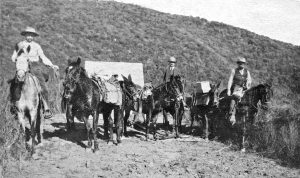

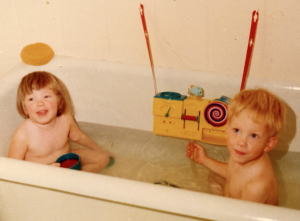
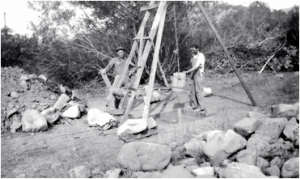
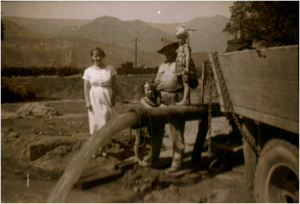
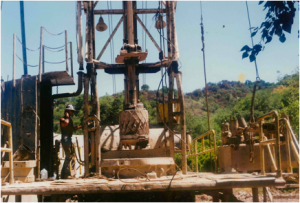
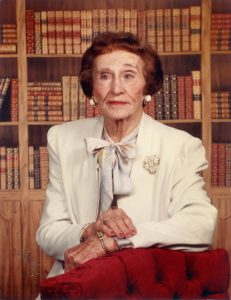 This lady knew about small beginnings. Born in Oklahoma around the turn of the century, Effie Skelton weighed in at 1 1/2 pounds. Told there was no way this child could survive, the Cherokee Indian auntie assisting at Effie’s birth ignored the doctor’s grim prognosis, wrapped Effie in soft cotton, tucked her into a shoe box which she placed in the warming oven of the wood stove and then every hour fed her a drop or two of blackberry brandy. Effie kicked into high gear and eventually became a driving force in the Ojai.
This lady knew about small beginnings. Born in Oklahoma around the turn of the century, Effie Skelton weighed in at 1 1/2 pounds. Told there was no way this child could survive, the Cherokee Indian auntie assisting at Effie’s birth ignored the doctor’s grim prognosis, wrapped Effie in soft cotton, tucked her into a shoe box which she placed in the warming oven of the wood stove and then every hour fed her a drop or two of blackberry brandy. Effie kicked into high gear and eventually became a driving force in the Ojai.